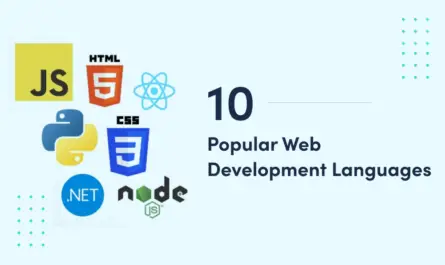Multi-cloud is the natural evolution that occurs when companies extend business processes to the digital world, as it is necessary for competitive advantage and cost control while expanding operations across multiple clouds. When you use services across multiple key public clouds, you unlock features, cost savings, and options that no player can deliver alone.
In other words, if extended properly and to the full extent of your unique strengths, your organization can get so much more for a dollar to fund growth. The concept of multi-cloud is an excellent way to strategically design and invest in your cloud environment, where you are in complete control.
Let’s dive deep and look at 13 ways to optimize costs in a multi-cloud environment.
1. Achieve Actual Awareness of Expenditures
When using public virtualization solutions to provide infrastructure or services to an organization, cost tracking across each of them shows where the spending is on par with or deviates from set budgets. This insight enables you to identify high-cost areas that may require managerial intervention.
2. Right-Size Over Provisioned Resources
Don’t waste money on unused bandwidth by optimizing the oversized resources in your multi-cloud environment. Review at least the virtual machines, databases, storage volumes, and bandwidth allocated regularly to determine if there is any abnormally high usage beyond the estimated requirements.
3. Utilize Pricing Calculators
Provide the approximate volumes and usage patterns that you expect to incur to get charges for the service. Much emphasis needs to be put on bandwidth and storage utilization since excessive growth in these concerns has a significant bearing on bloat.
It puts cost considerations right at the forefront when undertaking architecture planning when developers are equipped with pricing estimators. You can then guide them to the options that would best fit the needs of features and performance while only costing the lowest price. In addition, the overall pricing of the service can be much more beneficial and less expensive than the options considered.
4. Automate Resource Shutdown
A precious budget for the cloud is wasted on running unutilized resources in those periods when the business is closed. Reduce such waste by automating the process where unnecessary dev/test environments and other temporary structures are powered off during specific times.
Use VMware virtualization functions to set a command to shut down at a regular time each day and turn on the next morning automatically. In addition, incorporate automation with activity controls in a way that other long durations of inactivity prompt shutdown as well. It’s often not thought of that turning things off when not in use could mean a significant amount of savings.
5. Discuss on How to Get Discounts and Savings
To be precise, the sheer volume of customers in the multi-cloud environment makes readers’ organizations powerful negotiators with vendors. To access the negotiations, seek cheaper offers such as reserved instance pricing, rebates for higher tiered prices, and other savings that are based on total spending or usage. Do not let the opportunities to save resulting from competition generate no effect.
6. Refine Resource Tagging Strategies
A precise assignment of cloud resources enables detailed monitoring and control of expenses in various services, departments, environments, etc.
Whenever implementing a tagging system, make sure that there is a clear definition of who is responsible for each resource in the context of the tagging system and the objective of the system. The ability to tag early and often will provide maximal visibility over cost drivers and components needed for effective budgeting in a multi-cloud environment.
7. Rightsized Database Capacity
If not well managed, another massive budget issue rears its head when over-provisioning resources during database migration to the cloud that are not utilized most of the time. Check for conditions like low DAS Storage usage, read/write operations, and compute operations on production databases so that they do not cost a lot of money each month. To reduce costs even more, check out the option of buying capacity or migrating suitable workloads to autonomous, usage-based servers.
8. Put into Practice Finance-Based Resource Policies
Implement maximum usage quotas per group as well as allow self-service approval for reasonable additional resources. Policies and procedures should be set and enforced in which idle computers, printers, and other resources will be automatically logged off after a given period of inactivity. Ensure that there are clear demarcation lines that will allow the organization to meet the need for innovation while, at the same time, ensuring fiscal prudence is observed.
9. Make Wise Choices to Select the Right Regions and Zones
Network traffic costs rise rapidly in the case of ingress/egress charges, especially when using multi-cloud systems; thus, adjust the traffic flow by choosing regions based on cost factors that are specific to the given architecture. Understand the requirements and consumption of organizational workloads and data to group cloud dependencies and place them in the same geographic location to avoid incurring additional fees for data transfer.
10. Architecting Solution for Low-Cost Data Storage
Review the existing workloads to determine usage patterns, security considerations, and access requirements for the data, then classify the workload for the most appropriate storage services. It may be directed to significantly cheaper S3 or Blob DAS storage, while mission-critical databases require provisioned IOPS volumes or database performance guarantees.
11. Increase Accountability by Implementing Chargeback Models
This helps groups that face deficits when expenses directly appear on their books to get motivated to use them efficiently, which will benefit the entire firm. While doing so, finance leaders get detailed insight to support the policy adjustments that would enhance accountability for budget discipline. However, ensure that you communicate the change early enough before implementing it to avoid negative reactions from the members of the organization.
12. Adopt the Spot Pricing Model to Reduce Expenses
Inspect spot prices through each console to schedule launches when the value is optimal, or use auto-scaling groups to restart disrupted instances to reduce loads. When well done, fault-tolerant workloads are targeted to use spot instances, thus reducing companies’ bills without compromising performance.
13. Track the Use of Reserved Instances to Identify Cost Savings of Renewing
Those without a strong reliance on multi-cloud ignore reserved instances, leaving vast savings untapped. When searching for the right VMs to target for renewal discounts up to 72 percent off the standard rates of instances, it is advised to look for those that are more frequently used and approaching the end of the current reserved terms.
Summing It Up
Controlling costs in multi-cloud needs to be approached from all angles, especially identifying and eliminating inefficiencies and excessive spending and, at the same time, enabling internal stakeholders to make conscious decisions about their spending. Start by capturing usage insights across platforms critical to grasping key efficiency drivers to enable significant long-term improvement. The amount of attention that is invested today in proactively designing effectiveness sets the basis for sustaining growth and revenues in the future.
Our Replica Omega watches bring you the high standards of quality and excellence at an affordable price. Check the catalog for the best replica Omega watches.
Wholesale replica watches at affordable prices in our online store. You can use our coupons when you wholesale replica Rolex watches.







